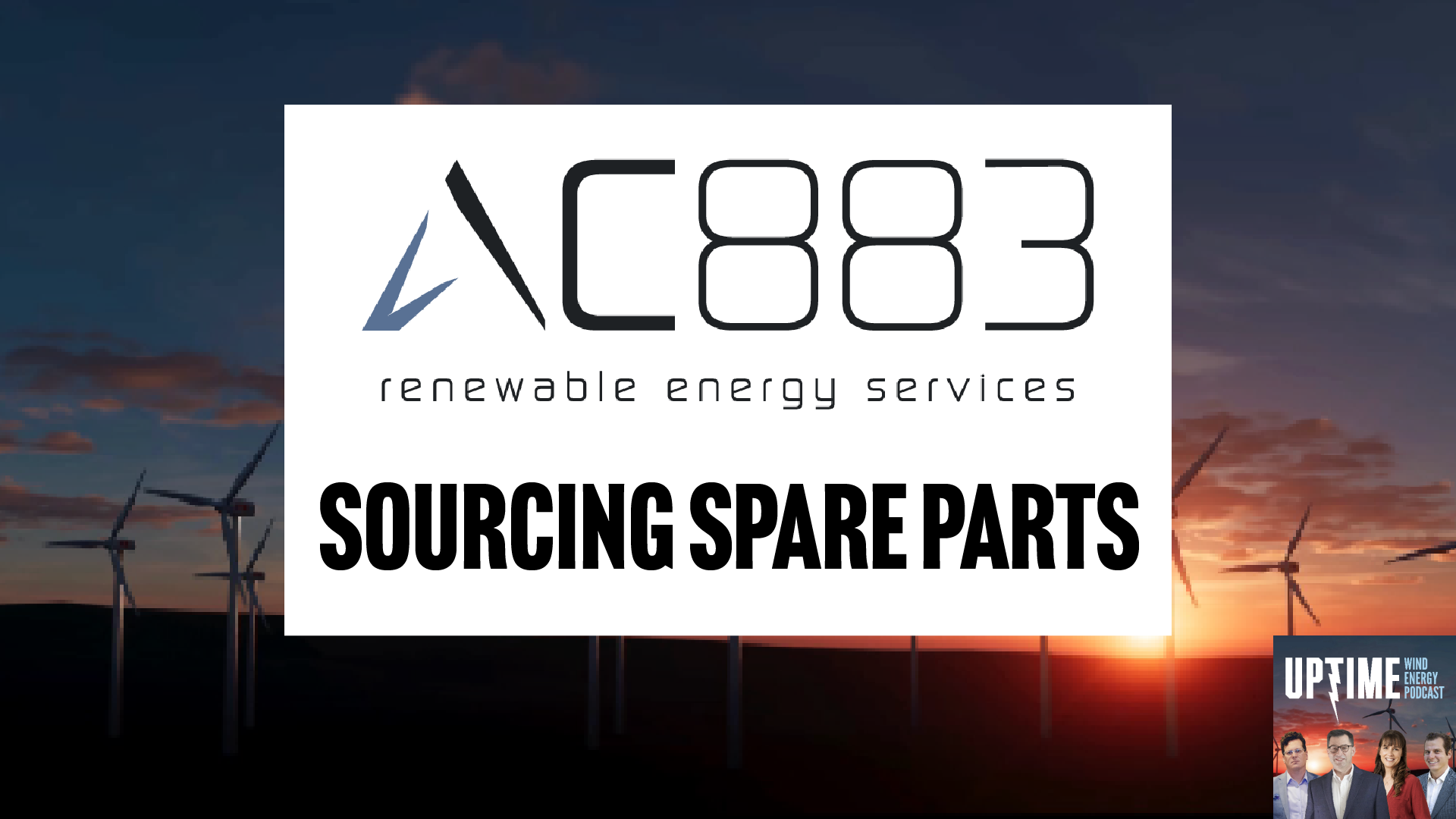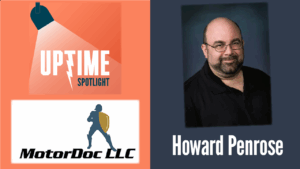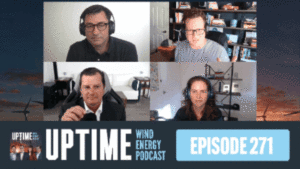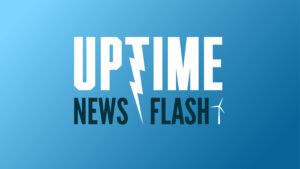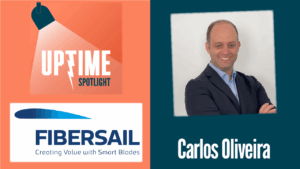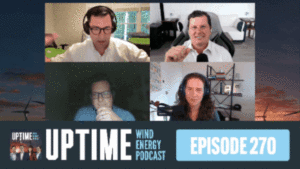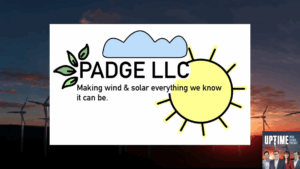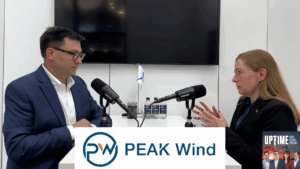Podcast: Play in new window | Download
Lars Bendsen joins the spotlight to discuss how AC883 helps operators source turbine parts to cut costs and reduce downtime. AC883 can offer faster response times and better pricing than manufacturers based in Europe. Lars shares how his company’s approach helps prevent extended turbine downtime by providing quick access to critical components.
Fill out our Uptime listener survey and enter to win an Uptime mug!
Sign up now for Uptime Tech News, our weekly email update on all things wind technology. This episode is sponsored by Weather Guard Lightning Tech. Learn more about Weather Guard’s StrikeTape Wind Turbine LPS retrofit. Follow the show on Facebook, YouTube, Twitter, Linkedin and visit Weather Guard on the web. And subscribe to Rosemary Barnes’ YouTube channel here. Have a question we can answer on the show? Email us!
Allen Hall: In the wind industry, a turbine standing still often means one thing, waiting for parts that should be readily available. This week on the uptime spotlight, we’re joined by Lars Benson of AC 8 83, which is based in Canada. AC883 has direct connections to manufacturers in Denmark where most critical worm turbine components are actually produced Lars shares, house site operators can cut costs and dramatically reduce downtime by bypassing the OEM middleman and sourcing parts directly from the original suppliers.
Welcome to Uptime Spotlight, shining Light on wind Energy’s brightest innovators. This is the progress powering tomorrow.
Allen Hall: Lars, welcome back to the show. Thank you. Spare Parts is a huge issue all over the world, but it seems like in the US and Canada, there’s always a shortage. They’re looking for spare parts. They don’t know where to get them, and the easy answer has been to call the original equipment manufacturer in terms of the GE Vestus Siemens, cesa, Nordex, whoever that may be, and just to place a order.
There are other opportunities out there. What happens when a wind side in Texas just decides to buy from the wind turbine manufacturer? How much are they paying overpaying for that part?
Lars Bendsen: I can’t say exactly on on dollars and cents, but but we know the markup from the OEMs.
Then they’re not shy of earning money on that, those parts. And yeah, so it’s very simple. We can get those parts directly from Europe directly from the suppliers to the OEMs.
Allen Hall: Yeah. And if I’m an operator, and I haven’t been over to Denmark to look at the situation there, a significant number of critical parts are actually manufactured in Denmark or in the surrounding areas.
You have no way of knowing that if you own the turbine,
Lars Bendsen: that’s true. You don’t. Somehow the OEMs have been really good and keeping a bit of cloud cloudy around that area. It’s actually pretty simple. They all produced either in in Denmark and Germany for basically all turbines. GE turbines is a target turbine from Germany that that they bought back when.
So that’s why sim that’s a German turbine as well. It’s not a US turbine at all.
Allen Hall: And the supply chain has remained that way for a long time.
Lars Bendsen: It’s a BP parts. It’s standard parts. There’s no rocket sites in it. Of course, there’s some legacy some software parts and stuff that we could be desk, some, what we call it electronic boards, which software on, of course we can’t do that.
That’s fair enough, right? That’s actually where the OOM has its value. That’s totally good.
Joel Saxum: I think part of the reason that you see this, that gap there in the industry is the simple fact that, and I don’t take this as a slight Lars because I love your website and what you guys do for marketing and branding, but in that corner of the world, and Alan, you and I were just talking about this couple of German companies we’re talking about they’re not that good at global branding and global marketing.
As a unit like culturally, so you don’t see really what’s going on almost behind that curtain as an American, when you log in and go I need some breaks, or I need this, or whatever. You don’t see that manufacturer’s website pop up. You may see an AC 8 83 pop up that says, Hey we have we sales spare parts.
But you just don’t as an American and to be honest with you. Running around the United States talking to all these wind site operators, they’re so dang busy with their day-to-day life and solving the, putting out the fires and the problems that they have every day, that they don’t have time to go search for that stuff.
So what do they do? They just call their procurement or the person that they know and they say, Hey, get me this. And if they end up overpaying for. 10, 20, 50% or whatever. It got the turbine back up and runway because uptime is king. So what else are you guys doing to strategically work with your clients and your customers to make sure that they don’t have to do that?
Lars Bendsen: Generally speaking, I agree with larger countries let it be germinated. But the US and Big Canada they have such a big inner market. They’re horrible in doing export, generally speaking. They’re not good at it. They’re really good at producing stuff and doing the take care of their own stuff.
Denmark, I think it’s 97% is export or being produced in Denmark, something like that. Because we have five, 5 million people, there’s no inner market we need to get out there where the market, inner market in US and Canada and Germany is so big. You don’t, we don’t need export. We’re not real good at it.
And don’t call Canada US export. It’s not export, it’s the in the market. So far,
Allen Hall: the turnaround times from the OEMs tends to be slow if they have the part in stock and there’s so much demand at for some specific parts that they don’t always don’t have it sitting on a shelf to send to you, which is a huge problem.
So you have to develop a subsequent chain, a supply chain, and why not go right to the source? Which is gonna be in Denmark for the most part. Why not do that as to source the actual part instead of an imitation part or a refurbished part, which I’ve seen more of recently. You can actually get the real part.
Lars Bendsen: It’s still surprising me sometimes. We hadn’t known em last year. They just closed their warehouse for three months. We just closing them. We cannot supply it for three months. How’s that gonna work? This wasn’t a European summer thing, was it? No, that was gonna be six weeks. That’s only six weeks. No, it was exactly in the fall, I think it was.
And they just decided to close it for three months. And I don’t understand this, OEMs should earn $0 on the turbines itself. They’re earning money on the service and the parts look at the accounting on vest and seems real. They’re earning no money. It’s only on their aftermarket and vest, in all fairness, are extremely good at it.
Really good at it. They have 75% or whatever the accurate number is covered of the fleet with service and parts is great. So we are not hunting as much vessel because why would we find that needle in the haystack where you could say that Siemens and ge they have less percentage, way less, maybe half of that depending on countries, et cetera and areas.
But still, again, how can you allow yourself to just close your warehouse to three months?
Joel Saxum: That’s crazy. Do let me ask you something about that, Vesta the vests setup ’cause in my mind, okay. I worked with a Danish company, very process driven, very controlled. There was step changes in gates and, everything was mapped out very well in how the company operated.
So do you believe that the, one of the reasons that Vestas may have a really good control of spare parts inventory and the direct connection to those sites is because they sign those. 20, 25, even 30 year FSAs. Is it all based on this overarching business model that, that encompasses that and the others aren’t just, aren’t doing that?
Lars Bendsen: I don’t know. I think it’s I think everybody wants to do it. That’s just my 2 cents. I’m not an expert in that area, but my 2 cents is that vessel has the power to demand that. And they’re not selling any new wind farm without a service contract, whatever’s 5, 10, 15. They do not. Where some of the wind inside the smaller, they have less power.
The owners say, you know what, that’s all well and good, but then we’re not gonna buy your turbines. And then GE and Siemens has to cave in a little bit. That’s my 2 cents.
Joel Saxum: I think strategically like GE with having expanded in their service thing and then now changing it to the hub and spoke model, like I think that this is my 2 cents, right?
I think GE saw some bloat. In what was happening in service. And I’m not gonna say parts ’cause I don’t think that’s true, but service and this FSA and I think that GE is actually strategically pulling back from signing these FSAs. And because some of the stuff with, we’ve heard horror stories with, and this isn’t just ge, it’s all the OEMs with, liquidated damages, catching up with people and those kind of things because they don’t have access to spare parts.
So they don’t have access, they don’t have the service people to get out there quick enough. So it’s a, there’s a large problem in the industry and I would say that if you’re a wind farm operator or wind site supervisor, technician, whatever, it’s at some point in time, you’ve felt the pain of not having that spare part that you need to get your turbine up and running.
And that’s where a C 83 comes into play.
Lars Bendsen: Yeah, I agree, but I also believe that some some owners are too small that the OEMs even care. We have seen some horrible example that, you know. Care list. That sales person sold that wind farm. That’s it. He can care list and the aftermarket people sitting in Denmark and they are, they’re closing at four o’clock eastern as it’s four o’clock.
It’s not four 10. It’s four o’clock.
Joel Saxum: So if you’re in the central part of the United States, you need to be on the phone by 7:30 AM Otherwise you’re not getting your stuff.
Lars Bendsen: No. Or on Fridays is close by noon, so forget about it. You get an answering machine, so you can’t even call on Fridays.
So that happens. We have a policy, we pick, we always pick up the phone, we all always answer our emails. We don’t have an out on office, not on purpose. At least doesn’t exist so I think it’s more avail, be available and go the extra mile instead of just sitting for a number. There are might be two picture lenders.
Let’s take an assemble of that. There’s four different vendors, which the same A nine B number from Siemens. There are four different A nine B sorry, producer of a nine BXX, x. So you can pick the most expensive one. You can pick the cheapest one, pick whatever you want. And there’s probably a reason between something, a correlation between quality and price often this.
So yeah. It’s about knowing those manufacturers and have access to them. Yeah. And we are, I think we’re pretty good at it.
Joel Saxum: Yeah. As I’m gonna put my wind farm operator hat on for me that, that’s that triangle. Good. Fast and cheap. Pick two. I. That’s what I always look at.
Two outta three. Yeah. But having someone in the corner, like AC 80, 83 that knows, hey hey Lars, I need this part. Great. Okay. I can get it from one of these four people. Here’s the cost for all four of ’em. Here’s the quality of our opinion and the track record we’ve seen, and here’s the lead time.
’cause that’s always the big one. If it’s a reactive situation where I need a part now, which we hope we’re not doing as much reactive as proactive, but if it’s a reactive part and I need it now, I need to get that turbine back up and running. You guys have the answers to those questions.
Lars Bendsen: Yeah, I think I agree with you that’s the reactive part of it and that happens.
SC actually happens a lot and I think we are back to what you said around before, that everybody is so lean, that site manager don’t have that extra person to source those parts. And all of a sudden we have a turbine down, we are missing one animal meal for $500. How can that happen? And of course you could be unlucky as well.
I totally get that part. We are trying to be more proactive. So if we have a major owner that have 20 or 30 sites, because you see they use the same parts, all of them. So one, don’t, we bundle out procurement instead of taking one off all the time. We spending a ton of time with one off $500. Procurement and it takes too much time and it’s too expensive for everybody involved.
There are some suppliers now I got actually hit by it. Some suppliers in in Denmark now they have a minimum or a quantity, or you get a fee, extra fee on it. So you can order a one animal meter used as an example without, is a 250 or $300 fee on it for handling the order. We’ve seen that as well.
Joel Saxum: So reactive is a lot of where the market sits, but how are you guys working with customers to be more proactive in their strategies for spare parts?
Lars Bendsen: As in the back office say GaN, Sydney, et cetera, they’re extremely data driven. We can see the history of what had been quoted, what had been ordered, what pricing has been ordered, when was it, et cetera.
So we know the history. I said, why? We can see we are buying 40. Why do you buy one or two design? And even if that person cannot do it, we’re still gonna buy five or 10. So we have something that helps our what call it procurement power. We leave it un stock because we are trying to avoid, has too much in stock and we do not wanna have obsolete parts either.
So that’s the kind of the balance we have, we are finding.
Allen Hall: Lars, can you gimme a sense of what kind of parts you can acquire or from the original equipment manufacturer? In Denmark,
Lars Bendsen: we just set up a big agreement with one of the main the major filter suppliers. Now we have a nine p numbers for all fillers in the world and for western fillers where we have all fillers and it’s a fraction of the price we’re paying today.
Fraction, pit cylinders motors, gears, et cetera. We are staying away from major components. We’re staying away from from gear boxes, generators, habit supply, main shaft and bearings for simul because that’s the focal point. So that’s, we could do that. But gearbox, generators it’s not worthwhile for us to do it.
We don’t add any value. You could get that part. It’s just a part number. We can’t add any value at all. So decided of staying away from it. We don’t wanna take the risk for a small portion of dollars.
Allen Hall: And if I’m sitting at a wind site and I’m getting requests for a specific part, how does that process work?
So I’m calling Sydney at your site or go, or getting ahold of you on LinkedIn. Then how does that work? How does that procurement system work? How do you navigate that? Because it sounds like you have some of the parts sitting on the shelf. Some you have to go acquire and negotiate.
What’s that process look like?
Lars Bendsen: The process is that you’ll get an email we got your R fq, we’re working on it right now. You’ll get an email within an hour that we have. It don’t, we won’t leave you high and dry. We are responding and then we are gonna source it right off the bat. If you don’t have it, and within a day or two you will have an answer back with a, with the price and lead time.
Allen Hall: Okay. So that’s a really short response time because usually it takes several days to get someone to re return that phone call.
Lars Bendsen: Yeah, so that’s the thing. Availability is key, right? Availability to the parts availability is key and it goes for the parts as well. You said lead time? We get way short on lead time, but call the manufacturers directly.
Waste or,
Allen Hall: and the, obviously the equipment manufacturers must have stock on the shelf. They have to do that so that those parts do exist. We just didn’t know where to find them until we called AC 8 83.
Joel Saxum: That’s a story that you hear a lot in the United States, right? Again, Alan and I travel wood Farm.
Oh, these, there was some German guys here. There was some Danish guys here. It’s always German and Danish. We had to get these special bolts from Germany, or we had this. So now everybody has their own Danish guy that they can call Lars that person Yeah. That has the connections to, to the mainland, to the motherland that can get these things for ’em, because that’s the troubling part.
Like we said, you don’t have time to, procurement is tough. Strategic procurement is difficult. Even people that are doing procurement at a large scale in an organization, say you’re in the back office and you’re the procurement person. They’re dealing with so many things that to find this one part at one of these few manufacturers over in Denmark, that’s difficult.
So now you have every, everybody that’s listening here has the connection to that dane that has the connections over there and can get it done for ’em.
Allen Hall: One of the big criticism in the United States and Canada is that when anybody drives by a wind farm and turbines not operating.
It’s just, it’s a knock on the industry. And the most times that is occurring is because they’re waiting for a spare part, honestly. Real simple stuff. Filters, for example, is a good one, right? And parts that they can’t get the hold of, but they just don’t know how to acquire them. And now they’ll listen to the podcast.
This is the way to do it. You call ours, you call Sydney at AC eight eighty three and you get this process started and then at that same moment I know Sydney is really sharp. She’s gonna provide you the list of things you can get. So she, you tell her, Hey, I got a GE two X machine. She says here’s the list of parts we can get for you.
Wow. That just saved my life for most procurement people. And that’s a personal, Sidney is not your friend for life because she is saving you. A lot of money and a lot of time, and a lot of hassle, which is the point, right? This is why everybody goes to AC 83 because it’s simple, easy to get things done.
Lars, how does an operator a site supervisor, a procurement person, get a hold of you to start ordering some of their spare parts through AC883?
Lars Bendsen: You have a website, ac883.com or my email, lars@ac883.com
Allen Hall: And you can also reach Lars and AC 8 8 3 at contact at ac883.com. The website’s great, so get ahold of Lars, get ahold of Sydney, get your projects moving.
Again, Lars, thank you so much for being back on the program. We love having you. Thank you. Thanks.



